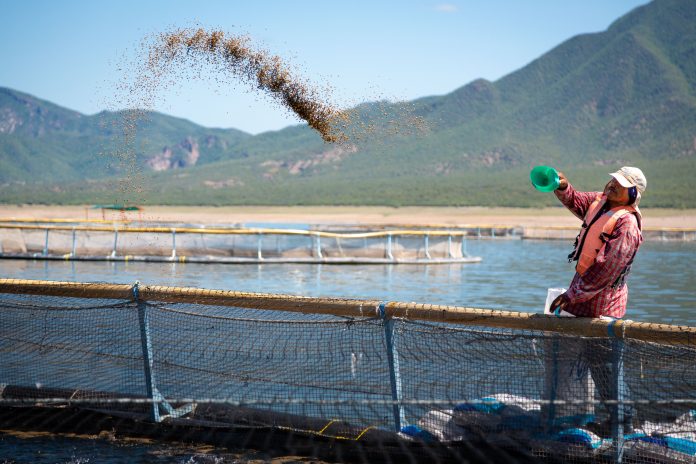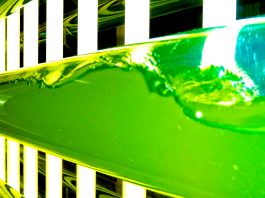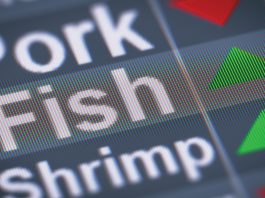The Innovation Platform speaks to Global Aquaculture Alliance communication manager Steven Hedlund about the importance of achieving responsible aquaculture throughout the US and across the globe.
Aquaculture, executed poorly, can have negative effects to human health, precious natural resources, and economies. At the Global Aquaculture Alliance (GAA), their mission is to promote responsible aquaculture practices through education, advocacy and demonstration. They address and underscore the reality that aquaculture is needed to meet the gap in seafood supply and demand and must be done responsibly. Aquaculture production is projected to grow from 47.2m metric tons in 2006 to 93.6m metric tons by 2030, while wild fisheries production is expected to decline from 64.5m metric tons to 58.2m metric tons during that same time. To feed the world’s growing population, aquaculture has to deliver an additional 46.4 m metric tons to meet the world’s seafood needs.
To begin, can you give us an introduction into the work and role of GAA?
GAA was established in 1997, and we are a member-based international trade association here in the U.S. We do a lot of pre-competitive advocacy and education work in regards to responsible aquaculture. We are probably best known for our ‘Best Aquaculture Practices third-party certification programme’, a set of standards by which seafood processing plants, farms, hatcheries and feed mills worldwide are audited against. Best Aquaculture Practices (BAP) certification ensures that seafood products come from facilities that are managed in an environmentally, socially and economically responsible manner. BAP is the world’s most comprehensive third-party aquaculture certification program, with achievable, science-based and continuously improved global performance standards addressing environmental responsibility, social responsibility, food safety, animal welfare and traceability.
Moreover, there’s an eco-label. Aquaculture facilities around the world are audited and, if they pass, they are certified, and that product is then eligible to carry an eco-label, which is consumer facing. We have more than 2,300 BAP-certified facilities in 35 countries worldwide.
When it comes to sustainable aquaculture, what does this involve?
GAA takes a very broad approach to sustainability. Our BAP standards as well as the pre-competitive advocacy and education work that we do address environmental responsibility, social responsibility, food safety, animal health and welfare, and traceability. These are the five pillars of our BAP program, which the world’s most comprehensive aquaculture certification program.
We tend to use the term ‘responsible aquaculture’ a lot, because the term ‘sustainability’ suggested that it’s a destination when it’s really a journey; you’re always on a path of continual improvement. However, responsibility suggests that what’s responsible today might not necessarily be responsible in five or 10 years’ time. People in our industry, especially those associated with us and our third-party certification programme, are always on a path of continual improvement and trying to be more and more responsible over time.
What are some of the negative effects that can occur when aquaculture is not conducted in a responsible way?
When it comes to environmental responsibility, you’re talking about proper management of effluent and water quality — whatever you can do to minimise your impact on the local ecosystem. This is because with a lot of aquaculture, you’re using or diverting water and you need to ensure that the water is being treated properly so that when it’s put back into the ecosystem, it’s not causing any additional harm.
When you’re talking about social responsibility, it’s about treating workers fairly, paying them a fair wage, and ensuring that they feel safe in the job and that they have a means to raise any complaints if they feel that they’ve been mistreated. What a programme like ours does is level the playing field worldwide; it’s a step above what the government would require.
In terms of animal health and welfare, you’re talking about responsible use of antibiotics (to treat disease, not prevent it), humane slaughter techniques, and not overstocking a pond or a pen with too many fish because this, in turn, can lead to environmental problems.
Finally, there’s food safety, which sometimes is forgotten. Sanitation is critical at all production levels — farm, hatchery, feed mill and especially in a processing plant where you’re handling raw product. You need to ensure that there are procedures in place to ensure that proper sanitation practices are being consistency followed by your employees across the board.
All of these things matter. When you have people being irresponsible even about one of those things, it matters. At the end of the day, this is about risk management and ensuring that you’re doing things responsible across the board.
What are some of the latest advancements in aquaculture practices?
Overall, the industry is getting more and more efficient, particularly at the farm level. For example, you’re seeing more feed automation and technology that allows farmers to better manage feed consumption, which is about 50 percent of a farmers’ costs, as well as monitor water quality. As a result, this helps farmers make more efficient and quicker decisions.
At the processing level, there is more automation being developed that cuts down on your need for labour, which is costly. We are also seeing a lot of innovation in the animal feed sector and raw materials go into producing the feed pellets that fish and terrestrial animals eat. There’s a lot of innovation in alternative protein ingredients, such as from algae. There are lot of things happening in this sector, which is very encouraging.
What would you say are some of the most current concerns/issues in the aquaculture industry, in terms of sustainability and responsible practices? How can these be improved?
There are definitely pockets withing aquaculture where there’s concern and a lot of effort being put forth across the industry to deal with it. For example, social responsibility aboard fishing vessels in the feed fish sector is a concern that the industry has been, and continues, to deal with. Another issue is animal disease management, which has been a challenge since day one and continues to be, whether it’s shrimp or salmon or tilapia. Dealing with animal disease is always a challenge and is probably the number one challenge that the industry faces.
Another concern is the proper use of antibiotics and ensuring that they are not being overused or abused. Farmers understanding what they’re putting into the water and the consequences of antimicrobial resistance in humans is also a big concern. However, it is important to note that all these things are being dealt with. They’re big issues that no one organisation can really address on their own. These are industry-wide issues that collectively the industry is working on, with help from organisations like GAA.
In addition, consumer demand continues to be a challenge. It’s still a very fragmented industry; there are dozens of species (half wild, half farmed), dozens of producing countries and dozens of consuming countries. This is a very highly traded product, and it’s a complex supply chain. Right now, there’s not really a unified push on marketing and sometimes it can be difficult to drive consumption, especially here in the United States. Product R&D and marketing are two things that the industry is also working on.
We’re seeing consumption increase worldwide, particularly with the growth of the middle class in Asia. They’re eating more seafood than ever before, which is very encouraging. Wild fisheries production has essentially levelled off. It’s hard to take too much more from the sea in a sustainable manner. Therefore, the growth in seafood consumption is going to come from aquaculture.
Steven Hedlund
Communications Manger
Global Aquaculture Alliance
steven.hedlund@aquaculturealliance.org
Tweet @GAA_Aquaculture
www.aquaculturealliance.org
Please note, this article will also appear in the first edition of our new quarterly publication.





